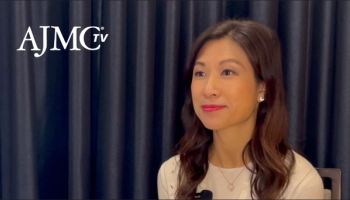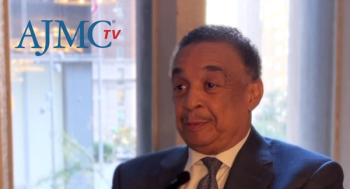
Will 2-Sided Risk Be a Reality in OCM?
With the Oncology Care Model now in its second year, 3 representatives discussed learnings and how the program can change, as well as incentivizing physicians to accept 2-sided risk, the ability to engage additional payers, and the future of oncology bundle payments.
The Oncology Care Model (OCM), a pilot reimbursement program developed by CMS’ Center for Medicare & Medicaid Innovation (CMMI), is now in its second year. To discuss the learnings and how the program can change, 3 provider representatives from across the country sat on a panel with representatives from CMMI at the Community Oncology Alliance’s Payer Exchange Summit on Oncology Payment Reform, held October 23-24, in Tysons Corner, Virginia. The discussion touched on incentivizing physicians to accept 2-sided risk, the ability to engage additional payers, and the future of oncology bundle payments.
Moderated by Lara Strawbridge of CMS, participants included Andy York, PharmD, JD, CMS; Terrill Jordan, Regional Cancer Care Associates (RCCA); Jeff Hunnicutt, Northwest Medical Specialties; and Ahmad Mattour, MD, Henry Ford Health System.
York started the discussion with a presentation on lessons learned in the cancer episode-of-care space. He then provided an overview of the OCM, describing it as a 2-part model designed around episodes of care, with emphasis on:
- 24-hour access to care
- Care navigation
- Treating patients with treatments aligned with national guidelines
OCM wants physicians to use certified electronic health records (EHRs), and use their data for care quality improvement. OCM reviews 6-month episodes of care, and allows performance-based payment based on retrospective performance. It’s a multi-payer model with 17 commercial payers participating, York told the audience, adding, “We need more participation to reach that critical mass of payers.”
Past, present, and future of OCM
While 196 practices initially participated in OCM, the number is now at 192 following practice consolidations, York said. He highlighted the following major milestones so far:
- Three quarterly feedback reports with claims data have been shared with enrolled practices
- Practices currently have 2 submission periods First round of clinical data submission has occurred On schedule to provide the first round of reconciliation in early 2018
York mentioned that the short-term changes that CMS is working toward is to reduce the reporting burden by working with EHR vendors and stakeholders. Acknowledging that “it’s been a moving target,” he said that one change has been to move from quarterly to semiannual reporting. The more long-term goals are to refine the OCM bundle by being responsive to program participants.
York recommended a continued dialogue between payers—both commercial and CMS—and providers as the model continues to be refined. “For many payer partners, having large enough bundles is a barrier. But it’s okay to start with higher-volume, more predictable cancer types,” he added. Importantly, all changes to the program should be scalable and sharing best-practices is a very good way to move forward and improve, he said.
Speaking to the experience at RCCA, Jordan said that they started looking at clinical integration, a holistic model of providing care, not just in office but working with physicians in other offices, prior to OCM. It made sense for them to “work on a roadmap we didn’t have to build ourselves.” Being able to work with other like-minded practices was important, according to Jordan.
For the Henry Ford Cancer Center, joining the OCM program “was the right thing to do,” said Mattour, adding that the change would provide the means to implement the quality projects they wanted to deliver to patients and achieve a higher level of care. He noted that their previous experience with similar models, such as a CMS project focused on evaluating earlier screening for cancers in specific populations, would provide benefits in terms of cost reduction.
For Hunnicutt’s oncology practice, multiyear value-based care programs provided opportunity “to get our feet wet.” Identifying the value of patient feedback and providing enhanced services solidified their decision of program participation.
When asked to identify some of the issues with OCM, Hunnictt said that while “this program has the legs to be successful” there were some issues with the model that they spotted early on, and CMMI was interested in practice feedback.
“Compliance is time-consuming and labor-intensive,” said Mattour. “Identifying OCM-eligible patients is a problem,” and he would like to see the list being provided earlier. He too appreciated that CMS was open to practice feedback.
Jordan came back with a different take on the information overload, saying that the overload “was actually very useful. When you look at the information, there was acknowledgement that flexibility was important, and it is a community effort where everyone wants to help others.”
Strawbridge emphasized that payers and providers are all in this together. “We do all share the same goals,” she said. “Working to determine best practices for identifying patients who can be included in OCM is important, but a challenge in the retrospective nature of the model.
Jordan said that variability arises when you have different programs and you don’t have everybody on the same page. “We didn’t know quite how daunting the reporting would be,” but when the practice spoke with payers, they acknowledged that there couldn’t be so much variance in reporting. He explained that they are trying to drive all their reporting to reflect OCM requirements to streamline their internal workflow.
Mattour agreed and said that they too are working with multiple stakeholders, and their hope is that multiple payers will be more engaged with OCM or a similar program. “We want to do what’s best for patients in working for a common goal,” he added.
The panelists were then asked to share a key advice for provider practices who would want to get involved in OCM, and with other payers. For Hunnicutt, placing the patient at the center of care is vital, in addition to an open line of communication with payers. Mattour emphasized the importance of geographic variations in the patient population, as well as a good understanding of the nuances of OCM, which he described as being “a full-time commitment,” since it will affect workflow, technical requirements, and personnel requirements. “It will improve outcomes. Keeping patients out of the ER means everybody wins.”
Explaining the diversity of the RCCA practices, Jordan said that with OCM “there’s an education process. “The uncertainty around programs like this, given the commitment you’re asking these practices to make, is massive.” If programs disappear, those services will go away, which will not be appreciated by atients or practices. “Start preparing now. No matter how much you prepare, you’re not going to be prepared for what’s going to happen,” Jordan said, drawing a simile to ‘death by reporting.’
Making OCM sustainable for your practice and the much-dreaded 2-sided risk
“We have to make a strategic decision to embrace rational care,” according to Jordan, which requires strategic decision and payer support. Practices require time to change and “in the first 6 months, nothing was done but figuring out what to do.” He emphasized the need for a longer-term commitment beyond the current 5 years.
Mattour would like an assurance that the current measures and steps taken for OCM will continue to receive support, in addition to interdepartmental collaboration, manpower, and software upgrades. Hunnicutt said that the emphasis on value-based care let their providers implement programs that they wanted for years. I can’t imagine what we’d do if we took away these patients’ programs. We have to be able to provide for those programs.
The physicians were non-committal when it came to 2-sided risk, saying they “needed more visibility into the data elements before making a jump.” Mattour said that 2-sided risk tends to favor CMS. “It’s difficult to attribute the reasons for a symptom, and patient populations differ. We need more time and data,” he added.
“Chairs cannot move on the deck,” Jordan explained. “There’s no way to take on risk if there’s the chance that CMS might change things.”
Newsletter
Stay ahead of policy, cost, and value—subscribe to AJMC for expert insights at the intersection of clinical care and health economics.
















































